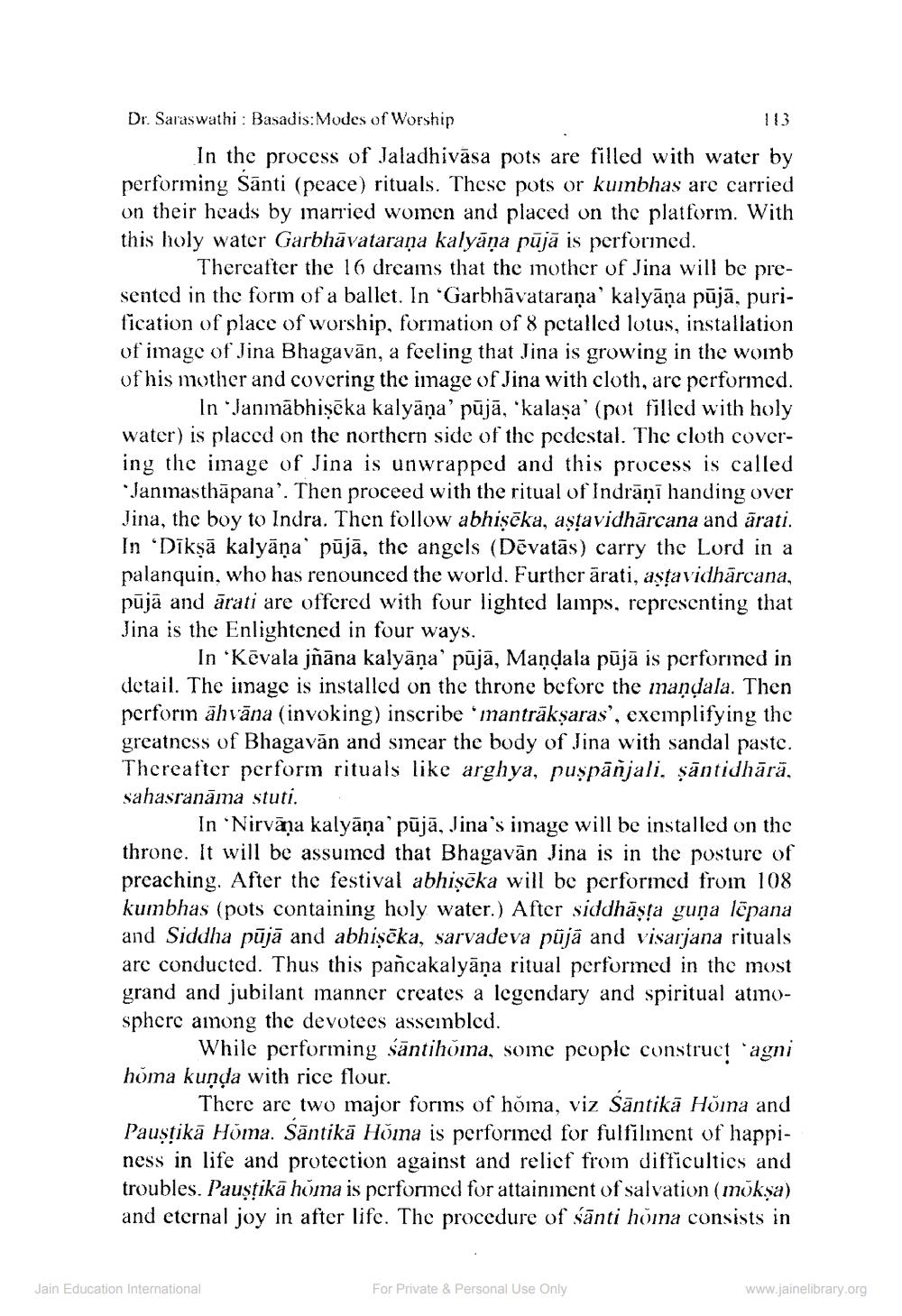________________
Dr. Saraswathi: Basadis:Modes of Worship
113
In the process of Jaladhivāsa pots are filled with water by performing Santi (peace) rituals. These pots or kumbhas are carried on their heads by married women and placed on the platform. With this holy water Garbhavataraṇa kalyāņa pūjā is performed.
Thereafter the 16 dreams that the mother of Jina will be presented in the form of a ballet. In 'Garbhavataraṇa' kalyāņa pūjā, purification of place of worship, formation of 8 petalled lotus, installation of image of Jina Bhagavan, a feeling that Jina is growing in the womb of his mother and covering the image of Jina with cloth, are performed. In Janmabhiṣēka kalyāņa' pūjā, 'kalaṣa' (pot filled with holy water) is placed on the northern side of the pedestal. The cloth covering the image of Jina is unwrapped and this process is called Janmasthapana. Then proceed with the ritual of Indrāṇī handing over Jina, the boy to Indra. Then follow abhişēka, aṣṭavidharcana and arati. In 'Dīkṣā kalyāṇa' pūjā, the angels (Dēvatās) carry the Lord in a palanquin, who has renounced the world. Further ärati, aṣṭavidhärcana, pūjā and ārati are offered with four lighted lamps, representing that Jina is the Enlightened in four ways.
In 'Kevala jñāna kalyāṇa' pūjā, Maṇḍala pūjā is performed in detail. The image is installed on the throne before the mandala. Then perform ähvāna (invoking) inscribe 'manträkṣaras', exemplifying the greatness of Bhagavan and smear the body of Jina with sandal paste. Thereafter perform rituals like arghya, puspāñjali, ṣāntidhārā,
sahasranama stuti.
In 'Nirvana kalyāņa' pūjā, Jina's image will be installed on the throne. It will be assumed that Bhagavan Jina is in the posture of preaching. After the festival abhiṣēka will be performed from 108 kumbhas (pots containing holy water.) After siddhāṣṭa guna lepana and Siddha pūjā and abhiṣēka, sarvadeva pūjā and visarjana rituals are conducted. Thus this pañcakalyāṇa ritual performed in the most grand and jubilant manner creates a legendary and spiritual atmosphere among the devotees assembled.
While performing santihoma, some people construct 'agni homa kunda with rice flour.
There are two major forms of homa, viz Santikā Hōma and Pauṣṭikā Hōma. Sāntikā Hōma is performed for fulfilment of happiness in life and protection against and relief from difficulties and troubles. Pauṣṭikā hōma is performed for attainment of salvation (mōkṣa) and eternal joy in after life. The procedure of santi hōma consists in
Jain Education International
For Private & Personal Use Only
www.jainelibrary.org




